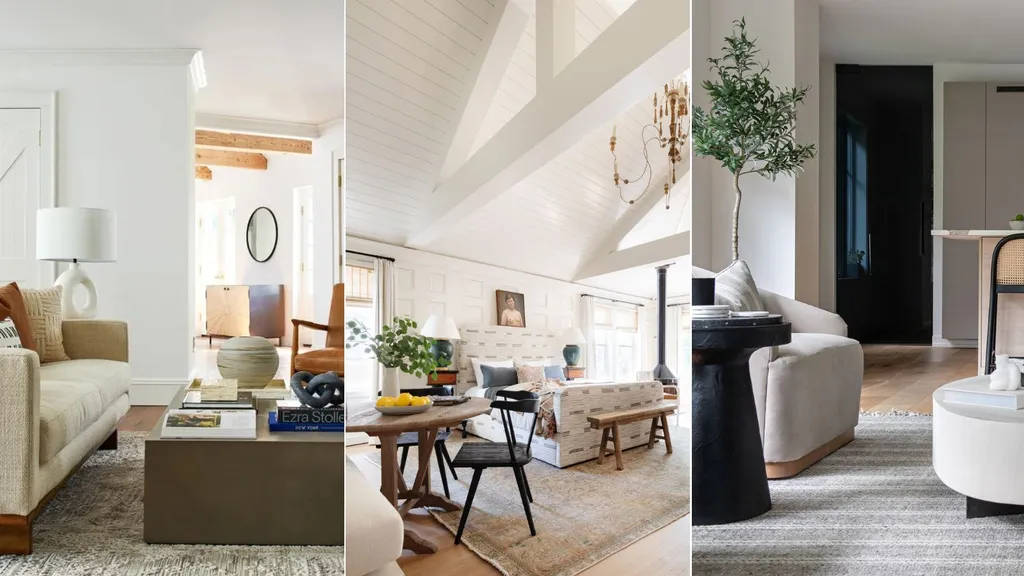Table of Contents
- The Rise of the Open-Layout Apartment
- Why Open-Concept Living Feels Different
- Key Benefits of Open Layouts
- Common Challenges and Smart Solutions
- Personalization: Creative Ways to Make Open Spaces Work
- The Impact on Well-Being and Connection
- Are Open Layouts Here to Stay?
- Tips for Making the Most of Your Open-Layout Apartment
The Rise of the Open-Layout Apartment
During the last 10 years, the design of open-layout apartments was a fashionable decision, but it has become a favorable standard of living that people expect to find in modern cities. This is a trend that demonstrates the changing ways of living as flexibility, natural lighting, and multifunctional spaces are valued more than before. The separation of the kitchen behind the walls and the compartmentalization of the rooms in the traditional floor plans are replaced by fluid nutrition spaces that encourage connectedness and transparency. Smaller apartments in open layouts are usually able to feel bigger and more welcoming and can easily fit a variety of different purposes, home offices, and entertainment without being restricted by the division provided by partitions.
This design advancement has been adopted in new constructions and renovations in most urban centers, creating a new standard of urban living. Residences like luxury North Park apartments often incorporate open-plan concepts to reflect how people now prefer to live, seamlessly blending living, dining, and kitchen areas into one continuous space.This makes it functional and gives a flow and unity to the home. The figure includes both tenants and owners as their attractions to such layouts in terms of their compliance with a contemporary lifestyle that is more versatile, more outgoing, and more adapted to the rhythm of daily life. The open-plan apartments are well-considered living spaces for the modern demands since life is becoming more mixed with personal and professional boundaries being erased, most particularly when it comes to small living spaces.
Why Open-Concept Living Feels Different
When entering an open-layout apartment, one usually feels an immediate sense of relief because the view of the dwelling is wide open and free to go left to right. The physical walls and divisions between rooms are broken; one activity bleeds into the other; the people who occupy the room are welcome to interact more naturally. The open loft life extends the feeling of space to the point of having even a small amount of square footage seem substantially higher than it is. Besides these aesthetic effects, the design also influences the residents on an emotional level. The fact that there are no walls means that people can have a chat across the kitchen and living room, or, in the case of young children, a parent can watch them cook their dinner. It gives the aspect of companionship, which can be of great importance to a family or housemate who desires to have a unified and social living environment. Work-at-home employees can easily open up and connect with others and do not feel isolated as a result of closing the doors. Statistics prove, again and again, that this type of design is what modern renters and buyers respond to, placing open floor plans at the very top of their housing priorities lists due to the opportunities they offer in terms of connectivity, flexibility, and style that these housing options provide.
Key Benefits of Open Layouts
Flexible Space: Open plans give residents the ability to decide the space that they want to transform into varying activities, including a communal area to eat and work, a work corner, or a family-friendly playground that easily becomes a nighttime lounge. Such flexibility represents a robust response to the constraints of contained floor plans, which confine every room as a one-use space and usually end up wasting valuable square footage.
Brightness: The thick interior walls, which previously limited natural sunlight, are no more, as it is now free across the apartment. It is a type of light that introduces a positive mood, which is associated with increased fitness and efficiency many times. Spaces related to the sun not only look friendlier but also motivate the creation of indoor plantations, which, consequently, clean the air and enhance the atmosphere.
Improved Contact: Due to the open setup, more spontaneous contact is possible in houses with many residents. Be it the joint breakfast in the middle of a week or an arrangement of a group movie night, easy visibility and motility in the shared space aid in bonding and building up a sense of family and friendship.
Flexible furnishing: There is no longer a fixed architecture to restrict the furnishing choices, and they are only limited by the limit of ideas. Households can also move the pieces around according to each season, including modular sofas or open dining spaces when entertaining; this allows constant motif change and redesigning of the interior.
To cement this tendency, according to industry analysts, 70 percent of new apartment construction puts an emphasis on an open-plan design, which solidifies this trend as a standard of living in an urban environment. Real estate agents and citizens often point at the sense of awe the open-concept houses create, letting in more sunlight and improving the clarity of lines within a living space, as well as making it more occupationally viable.
Common Challenges and Smart Solutions
However, specific complications often support the most popular designs. Open plans eliminate the conventional sound insulation, which may direct sound to the kitchen or the electronic tools at longer distances than those desired. Cooking smells can permeate the whole house, so the smell of the dinner you had last night might still be in the air even after the dessert. There are exposed clutters all the time without rooms to close them up, and it becomes difficult to conceal daily messes. Such hindrances, however, are not insurmountable. Most citizens purchase flexible dividers like high bookshelves or potted plant arrangements, which could segregate areas and act as decorative items of functionality. Light fabrics such as rugs, curtains, and wall-mounted hanging fabrics provide softness for the eyes and ears and strengthen areas in the apartment. Furniture that serves multiple functions, such as an ottoman with compartments or drawers under a bed, makes it so that more storage space can be found on the surface. Rolling desks or folding tables also assist in the form of modular furniture that can be moved into and out of existence when you need a workspace or dining area. The final objective is equilibrium, keeping openness and applying innovative design to deal with neighborhoods of privacy, sound, and order.
Personalization: Creative Ways to Make Open Spaces Work
Freedom of enclosed rooms means an opportunity to personalize. Open-floor houses serve as a canvas that their inhabitants can customize to reflect their unique patterns and hobbies. An area rug, bookshelves, and especially lighting fixtures can quickly define a new zone, transforming a bare length of empty floor into a cozy reading nook or a convenient back office. Each section can be cut and celebrated visually with decorative elements such as throw pillows, artistic installations, or dark, dramatic pendant lamps. The other advantage is the ease of reconfiguration, especially for the creative-minded: a living space can be converted to accommodate guests during the holidays, and small workstations are converted to become personal spaces during working times. The adaptability further spreads to hobbies; musicians, artists, or fitness aficionados can commit to and use and change space according to requirements. Open floor plans are generous to those who will consider going against the norms of a floor plan and turning every apartment into a world without a direct reflection of the inhabitants of it.
The Impact on Well-Being and Connection
The environment we live in is impacted by the performances of individuals and the morale of the people. Open plans are known to stimulate activity in the home, leading to an active lifestyle. When unhindered spaces are offered, people tend to stretch, sweep, socialize, and interact. The new development of architecture and mental pathology is drawing an interesting parallel between the higher levels of daylight and openness in the person and less stress among the individuals, as well as more relaxation and happiness. According to residents, they are not as isolated now and are more in the rhythm of work, play, and connection through not visually and physically limiting assumptions and walls. For families with young children or pets, an open plan will require constant supervision and foster better relationships among family members while providing a space for play and creativity. The open-living systems are members-only since they promote companionship and provide people with daily hints when the world is awaiting their involvement, both inside and outside.
Are Open Layouts Here to Stay?
Amid the numerous sectors molded and molded by the events of the last couple of years, the idea that open layouts will be abandoned as people will again need their very own nooks and distances and space has been thrown around. Isn’t remote work and online education also a reminder of how important it is to have areas that are isolated and distant and where there are no distractions? Yet most trend watchers and housing experts see open layouts as a permanent fixture, with adjustments to address these new needs. Flex nooks and sliding panels (or convertible features that initiate change between public and private use of the space) are features often found in a modern apartment where the design is well balanced between communal open space and personal space. Such adjustments will enable residents to achieve the social and aesthetic rewards of the open planning regime and gain solitude when a need arises. It is an intelligent solution to accommodate new lifestyles without losing the advantage of open-concept apartments.
Tips for Making the Most of Your Open-Layout Apartment
Intentional Zone: With the help of furniture, rugs, and lighting, you can arrange the space projecting your requirements so that the passages of traffic are not interrupted, and the functions of each area are clear.
Select Adaptable Objects: Opt for lightweight (nonpermanent), movable, or convertible furnishings that can be used in many different ways, or that can be rearranged as your living program changes.
Reduce Clutter: Place belongings in baskets in the cabin or in shelving or inside benches to hold the illusion of being empty and in order.
Play with textures: add soft materials and a variety of materials to differentiate areas of activity and create a pillow-like environment in your house.
Open up the light: Go heavy on natural light by using sheer curtains and positioning furniture in such a manner that windows are not obstructed by any objects, creating an uplifting effect of open living.




